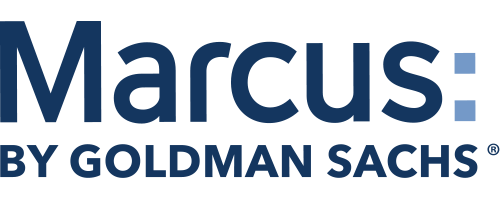5 Low Risk Short-Term Investment Options


By Braden Smith | October 28th, 2018 | Banking
This post may contain sponsored links, view the affiliate policy.
It’s easier to make money when you have money. We’ll be discussing the best way to invest in the short term. These investment strategies are aimed to provide a return in one year or less. As some short-term investment examples will be highlighted, the risk will also be measured.
What is a Short-Term Investment Plan?
Unlike long-term investing, people want to make money quickly and may not want to tie their money up for a long time. Short-term investment plans typically yield less than long-term strategies that implement compound interest.
When looking at the short-term horizon, typically anything less than two years is applicable. Long-term can be looked at as more than 20 years, and medium-term for anything in-between.
One of the main goals of short-term investing is to beat inflation and ensure the money you have will not depreciate in value. A Dollar today is worth less tomorrow. Actually, a dollar today has the same buying power as $0.98 in a year, due to 2% inflation.
5 Low Risk Short Term Investment Options
A risk and reward analysis should be conducted when making any type of investment. High rated bonds issued by reputable institutions and governments have a low risk of default. Alternatively, investing in a VIX (Volatility Index) ETF such as TVIX could potentially destroy a portfolio with the wrong strategy.
We will focus on primarily low risk short-term investment options. If you want to learn about high risk, high reward investment strategies, stay tuned for our next article.
High-Yield Savings Accounts
A High-Yield savings account is the same thing as a savings account, but it allows the owner to earn money in their account. Banks and credit unions will offer these financial products as a means of lending money to other customers and other functions. From the account holder perspective, there is no risk.
Simply open a high interest savings account at a bank, preferably one with a high APY, and deposit money into the account. The bank may require a minimum balance within the account and may also require it stay deposited for a specific period of time. It’s best to take note of all fees and penalties associated with the account. There is no risk associated with opening a high-yield saving account.
On a monthly basis, interest is earned on the money within the account. The interest earned may then be deposited into a checking account or reinvested in the savings account. This short-term investment plan is one of the easiest strategies to earn money with little to no work.
Banks and Credit Unions insured by the FDIC and NCUA protect consumers from banking mishaps.*
Certificate of Deposits (CDs)
A Certificate of Deposit (CD) is a financial product offered by banks and credit unions. It allows for the bank to invest the money locked within the CD and return an interest to the account holder for borrowing the funds. Money allocated to CDs may not be withdrawn until the entire term is completed.
Apply for an account, deposit money into the bank, and setup a high-yield certificate of deposit. Take note of the APY (Annual Percentage Yield) and Term. The longer the term, the higher the APY, because the bank can now use that money for a longer period of time.
After the completed term, you will receive the money along with any interest earned. Some banks may charge a small fee to return the CD into an account at a different bank.
This short-term investment option is great for individuals looking to save monthly, while earning a decent return. The CD may not be for all investors, as the money is essentially locked up for a set period of time.
Banks and Credit Unions insured by the FDIC and NCUA protect consumers from banking mishaps.*
Treasury Bonds
Treasury Bonds are issued by the U.S. Department of the Treasury. The government raises funds for a variety of different reasons through Bonds, Bills, Notes, and other instruments. Bondholders receive a semiannual interest yield for holding the bond.
Either use a broker, bank, or the government website TreasuryDirect to purchase treasury bonds. At the end of the term, the principal is returned to the owner of the bond. Current rates are about 3.00% as of October. TreasuryDirect offers bank deposits of the interest earned on the bonds.
To make this a short-term investment strategy, utilizing brokers for their secondary market provides liquidity for bondholders.
The only risk associated with this short-term investment option is the government missing interest payments. Fortunately, this is very unlikely in the case of treasury bonds.
Some capital risk can be added when incorporating inflation. $1,000 today is worth much less than $1,000 in twenty years. This is why the secondary markets are so useful.
Exchange Traded Funds (ETFs)
An Exchange Traded Fund (ETF) is an investment fund that’s listed on the stock exchange. An ETF’s shares are tradable among investors who can buy and sell at the market price. An ETF’s price can fluctuate similar to a publicly listed company on the NYSE or NASDAQ. ETF’s can hold assets in stocks, bonds, or commodities.
To purchase shares of an ETF, one may open an investment account with a broker and purchases the shares directly. Robinhood is a great broker that offers zero commission fees on stocks or options.
Risks associated with ETFs include inflation, volatility, and response to market conditions. However, ETFs that focus on bonds do not react to the market the same as stocks. Bonds typically yield a set coupon rate, which provides a steady stream of income for investors.
TDifferent ETFs such as the (SPY) tracks the S&P 500, meaning that it will appreciate and depreciate in correlation to that index. Others may track an industry, sector, basket of securities, or portfolio. Research is very important when choosing this short-term investment option.
Note that investments in ETFs are not insured. Loses are an apparent risk, as due diligence is recommended with whatever ETF strategy is used.
Peer-to-Peer Lending
This type of lending is when you use a website like UpStart or LendingClub to loan money to other people. These websites facilitate the lending by issuing a credit check and analysis per applicant based on education, work experience, current debts, and many other metrics.
If the company determines the requestor meets the criteria, you will be given the opportunity to allocate some of your funds to their loan. In return, you will earn a commission of the APR (Annual Percentage Rate) that is charged.
Loaning other people money is one way of making an above average return compared to other methods. With the increased reward, comes increased risk, and all investors should have their own risk tolerance.
Most of those who borrow from peer-to-peer lending companies don’t have to put up collateral. This is also known as unsecured lending, which can be a disqualifier for some investors.
At UpStart, 91% of loans are either current or paid in full. This means that 9% of loans are either delinquent or currently late.
UpStart is currently only available to accredited investors.
Most Effective Short-Term Investment Option
There are thousands of different Exchange Traded Funds (ETFs). This means that investors can find an ETF that aligns with their risk tolerance. ETFs are transparent, allowing for individuals to research and see what holdings each fund has. A balanced mixture of bonds, securities, and commodities provide a great risk to reward ratio.
Investing in government bonds also provides a safe haven for when the entire market isn’t doing so well.
A combination of the above short-term investment strategies will allow for much needed diversification within a portfolio. If you’ve ever heard the term “Don’t put all of your eggs into one basket”, well, it applies to investments as well.
For Your Convenience
*Most banks are insured by the FDIC (Federal Deposit Insurance Corporation) for at least $250,000 per account. Same for credit unions, by the NCUA (National Credit Union Association). This means that in the case that the institution was to go bankrupt, the federal agency would return lost funds.
As a disclaimer, I am not a registered financial advisor. All post details are not official recommendations, but unofficial investment educational information. As always, do your research before purchasing securities, bonds, or exchange traded funds.




